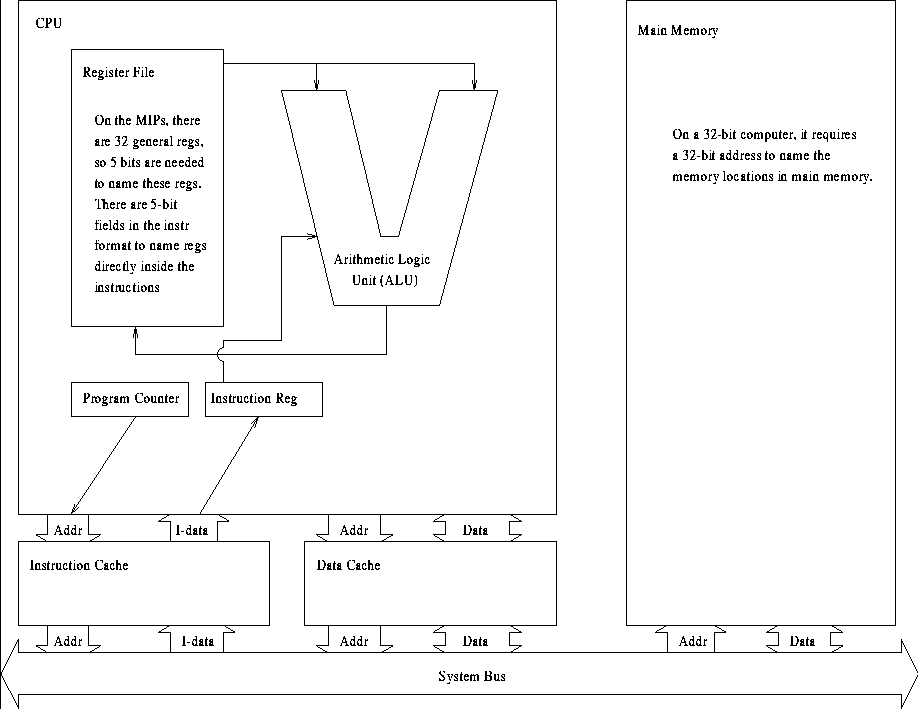Self-modifying code is bad
Self-modifying code is generally frowned upon. Not only is it hard to
read and debug, it also creates problems with the cache (``cache
coherence''). First, what is a cache?
The cache sits between the CPU and the system bus:

Similar to registers, cache memory is fast in
comparison to ``main'' memory (but cache is typically a little
slower than registers.) Unlike registers, which may be named using
only a few bits within instruction words (in parameter fields of an
instruction), cache memory is not directly referenced: cache memory
holds copies of frequently used data from main memory, and its
contents are accessed simply by referring to main memory addresses.
Accesses to cache is therefore transparent: a program need
not do anything special to make use of the cache.
The purpose of the cache is to provide a faster-to-access
copy of what's already in main memory. The hope is that the
program has locality: that it will re-access a memory
location that it had used many times in a short period of time. This
is true for instruction memory holding the body of a small loop, for
example, since each time the CPU runs through the loop, the body is
re-read. This is also true for some kinds of data memory: for
example, variables that were not placed within registers but are still
used frequently within one or perhaps several functions.
RISC machines typically will separate out cache memory into two kinds:
instruction cache (``I-cache'') and data cache (``D-cache''). The
reason for this an optimization one: because the majority of programs
do not modify themselves, the RISC architects realize that if they
simply forbid self-modifying code, they can make the I-cache be
read-only (from the CPU) (the D-cache must, of course, be read-write).
By making the I-cache read-only, the circuitry implementing the
I-cache is simplified, and the I-cache can be made more dense: the
amount of memory per square centimeter of silicon is increased, and
the effectiveness of the I-cache improves for the same amount of chip
area expended.
[
CSE 80 |
ACS home |
CSE home |
CSE calendar |
bsy's home page
]

bsy@cse.ucsd.edu, last updated Wed Oct 16 22:37:39 PDT 1996.
email bsy

